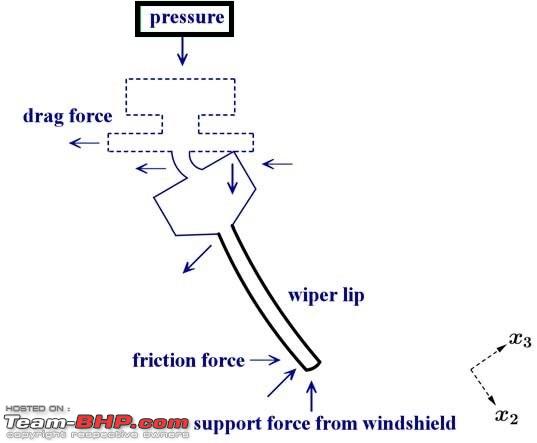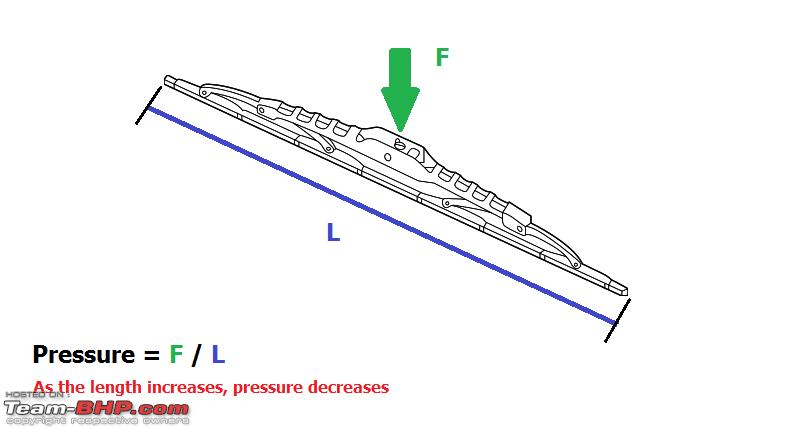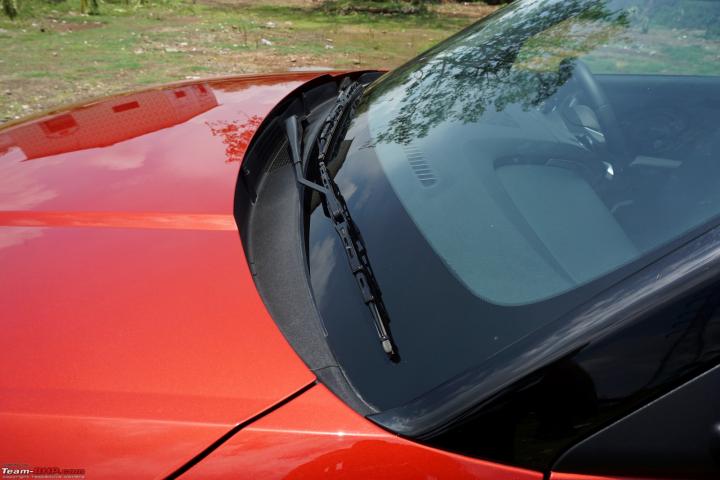News
Upsizing wiper blades may not be a good idea
When we upsize, we are reducing the pressure with which the edge sits against the windshield. Which should result in decreased performance BUT, longer life.
BHPian Tgo recently shared this with other enthusiasts.
Some elementary physics applied to the windshield wiper blade does not show promising results for the wiper blade upsizing trend that many of us ponder about.
Take the wiper assembly of any vehicle. The wiper arm has has a spring which pulls the arm against the windshield. The spring is component providing the constant force to the wiper arm.

Lets focus on the pressure. This is a cross section of the edge which equates to a point on the edge. Source
The wiper blade assembly (one which has the rubber edge) is always under this force which is a constant. Lets call it F. The length of the blade is L. Each point on the edge in contact with the windshield has a component of this force which would be the pressure = F / L ( Considering line contact for simplicity).

Elementary Physics applied to a wiper blade. From common understanding, more pressure helps the edge push more firmly against the windshield, which should equate to better wiping performance.
When we upsize, we are reducing the pressure with which the edge sits against the windshield. Which should result in decreased performance BUT, longer life.
Keeping apples to apples comparison (same style of blade), the only reasons I could come up with for upsizing was the increased sweep coverage. Is it that important than getting a clean sweep? So, why do we & why should we, still upsize the wipers?
Here's what GTO had to say on the matter:
I've always stuck to OEM sizes. This seems like a solution to a problem no one had!
Here's what BHPian Dr.AD had to say on the matter:
I think your analysis is correct. Increasing the wiper blade size will decrease the pressure (Force per unit length in this case of linear contact) and that will reduce the wiping performance, but gain increased sweep area. However, increased sweep area is very tricky, because modern cars have complex windshield shapes, and trying to increase the sweep area may result into interference between the two blades (I have seen this happening on a few cars), and/or the blades touching the outer edge of the windshield and making hitting sounds (I have seen this happening on a few cars too).
There is often not enough room all around the windshield to simply increase the sweep area by using a larger blade and not cause any interference. If that was indeed possible, most car manufacturers would have used a bigger blade in the first place.
Wiper designs are quite complex, and most OEMs do a tight fit based on windshield shapes, sizes, and maximum coverage area possible without any interference. Trying to mess up with that often results into unnecessary problems which did not exist in the first place.
Here's what BHPian dhanushs had to say on the matter:
There is a certain amount of pressure which clears off water off the windshield. Once that point is achieved, any more pressure means really nothing.
There is a certain amount of tolerance in the manufacturing of every component in a car, and that is what we take advantage of, while upgrading. Just like we take advantage of the Torque rating tolerances of the gearboxes and driveshafts while remapping, in this case we are taking advantage of the spring stiffness to increase the wiping area.
So, if you can get more wiping area with a larger blade, without interfering with the other blades or windsheild beadings, go for it.
Check out BHPian comments for more insights and information.
- Tags:
- Indian
- Member Content
- wipers

















